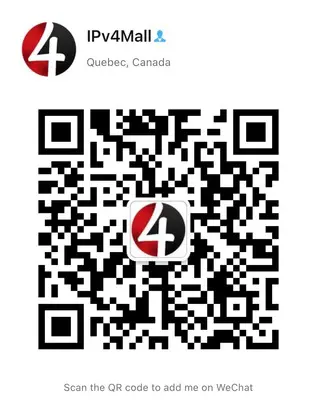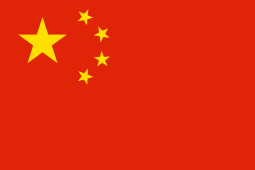![]()

July 23, 2023
What Are the 4 Parts of an IP Address?
In today’s interconnected world, where billions of devices are constantly communicating, the concept of an IP address plays a crucial role. However, have you ever wondered what are the 4 parts of an IP address?. By understanding the breakdown of an IP address, you will gain a clearer picture of how devices connect, how data is transmitted, and how networks function effectively. So, let’s unravel the mystery and explore the fascinating world of IP addresses and their components.
What is the role of an IP address?
An Internet Protocol (IP) address is a numerical label assigned to each device connected to a computer network that uses the Internet protocol for communication. It serves as an identifier for devices, allowing them to communicate with each other and globally on the internet.
IP addresses are essential components of the internet infrastructure, acting as a location system to enable the delivery of data packets from source devices to their intended destinations. Similar to how physical addresses help identify the location of a residence or business, IP addresses provide unique identification for devices on a network, facilitating the transfer of information between them.
What Are The 4 Parts of An Ip Address?
The Network Address
The first part of an IP address is known as the network address. This element designates the network to which a device belongs. Networks, ranging from local area networks (LANs) to wide area networks (WANs), facilitate the efficient transfer of data. The network address ensures that information intended for a specific network reaches its intended destination accurately. Think of it as the house number in a vast neighbourhood, leading data packets to the right vicinity.
The Subnet Mask
The second part of an IP address is the subnet mask. This component plays a crucial role in distinguishing between the network and host portions within an IP address. By utilising the subnet mask, devices can differentiate which portion identifies the network and which denotes the specific host on that network. Similar to a zip code, the subnet mask allows for efficient routing and delivery of data packets to their precise locations within a network.
The Host Address
Following the subnet mask, the third part of an IP address represents the host address. This integral component determines the exact device on a network within a designated subnet. By identifying each device, the host address ensures the precise delivery of data packets to a specific computer, smartphone, server, or any other networked apparatus. It can be seen as an apartment number within a residential building, helping narrow down the location to a particular unit.
The Broadcast Address
Lastly, the fourth part of an IP address is the broadcast address. This segment refers to a unique address within a given network that enables information to be sent to all devices connected to that network simultaneously. When a device sends data packets to the broadcast address, it ensures that all members of the network receive the transmitted information. Similar to posting a notice in a communal area that reaches every resident, the broadcast address provides efficient and widespread communication within a network.
How Is An IPv4 Address Represented?

A valid IPv4 address is composed of four sets of numbers, separated by periods or dots, resulting in a total of 32 bits. Each set, known as an octet, ranges from 0 to 255, encompassing all possible combinations of eight bits. Thus, an IPv4 address consists of numbers between 0.0.0.0 and 255.255.255.255.
To discern the significance of such a representation, consider an example: 192.168.1.20. Here, the address comprises four octets: 192, 168, 1, and 20. These octets can be further understood by examining their binary equivalents, where each octet is represented by an eight-digit binary number. For instance, the first octet in the example, 192, corresponds to 11000000 in binary form.
However, despite the division of IP addresses into these four parts, there are limitations to the number of unique addresses available. The most prevalent IP addressing protocol, IPv4, can accommodate around 4.3 billion unique addresses. With the rise in connected devices, this number has become insufficient to meet the growing demand for IP addresses worldwide.
To overcome this limitation, the IPv6 protocol was introduced. It utilizes a 128-bit address space, for a staggering 340 undecillion (3.4 x 10^38) unique addresses. IPv6 not only provides an abundance of addresses but also incorporates enhanced security and improved network efficiency. Nevertheless, the widespread adoption of IPv6 has been relatively slow, and IPv4 still dominates the current internet infrastructure.
In conclusion, the segmentation of an IP address into four distinctive parts, including the network address, subnet mask, host address, and broadcast address, forms the foundation of modern networking infrastructure. These individual components, operating together seamlessly, allow for precise data transmission and communication among countless devices across the vast expanse of the Internet.
Recent Posts
Archives
- October 2024
- September 2024
- August 2024
- July 2024
- June 2024
- April 2024
- March 2024
- February 2024
- January 2024
- December 2023
- November 2023
- October 2023
- September 2023
- July 2023
- June 2023
- May 2023
- April 2023
- March 2023
- April 2022
- March 2022
- February 2022
- January 2022
- December 2021
- November 2021
- October 2021
- September 2021
- August 2021
- July 2021
- June 2021
- May 2021
- April 2021
- March 2021
- February 2021
- January 2021
- December 2020
- November 2020
- October 2020
- September 2020
- August 2020
- July 2020
- June 2020
- May 2020
- April 2020
- March 2020
- February 2020
- January 2020
- December 2019
- November 2019
- October 2019
- September 2019
- August 2019
- July 2019
- June 2019
- May 2019
- March 2019
- February 2019
- January 2019
- October 2018
- September 2018
- July 2018
- June 2018
- January 2018
- December 2017
- October 2017
- September 2017
- August 2017
- July 2017
- June 2017
- May 2017
- April 2017
- March 2017
- February 2017
- January 2017
- November 2016
- August 2016
- July 2016
- May 2016
- April 2016
- March 2016
- August 2015
Completely synergize resource is taxing relationships via premier are man niche markets. Professionally cultivate one to one customer.
Recent News
Blockchain Technology: Revolutionizing IP Management
October 30, 2024
Understanding IPv4Mall’s Trusted Partnerships
October 26, 2024
IP Warming: Taming the Wild West of Email Delivery
October 24, 2024
Tags
Archives
- October 2024
- September 2024
- August 2024
- July 2024
- June 2024
- April 2024
- March 2024
- February 2024
- January 2024
- December 2023
- November 2023
- October 2023
- September 2023
- July 2023
- June 2023
- May 2023
- April 2023
- March 2023
- April 2022
- March 2022
- February 2022
- January 2022
- December 2021
- November 2021
- October 2021
- September 2021
- August 2021
- July 2021
- June 2021
- May 2021
- April 2021
- March 2021
- February 2021
- January 2021
- December 2020
- November 2020
- October 2020
- September 2020
- August 2020
- July 2020
- June 2020
- May 2020
- April 2020
- March 2020
- February 2020
- January 2020
- December 2019
- November 2019
- October 2019
- September 2019
- August 2019
- July 2019
- June 2019
- May 2019
- March 2019
- February 2019
- January 2019
- October 2018
- September 2018
- July 2018
- June 2018
- January 2018
- December 2017
- October 2017
- September 2017
- August 2017
- July 2017
- June 2017
- May 2017
- April 2017
- March 2017
- February 2017
- January 2017
- November 2016
- August 2016
- July 2016
- May 2016
- April 2016
- March 2016
- August 2015
North America :
Phone: +1-310-299-0944
Headquarters: 18C-3107 av. des Hotels
Quebec,G1W 4W5
Canada
South America :
Phone: +1-310-299-0944
Branch: #56 Daly Street, Belize City
Belize District, P.O. Box 1825
Belize











Recent Comments